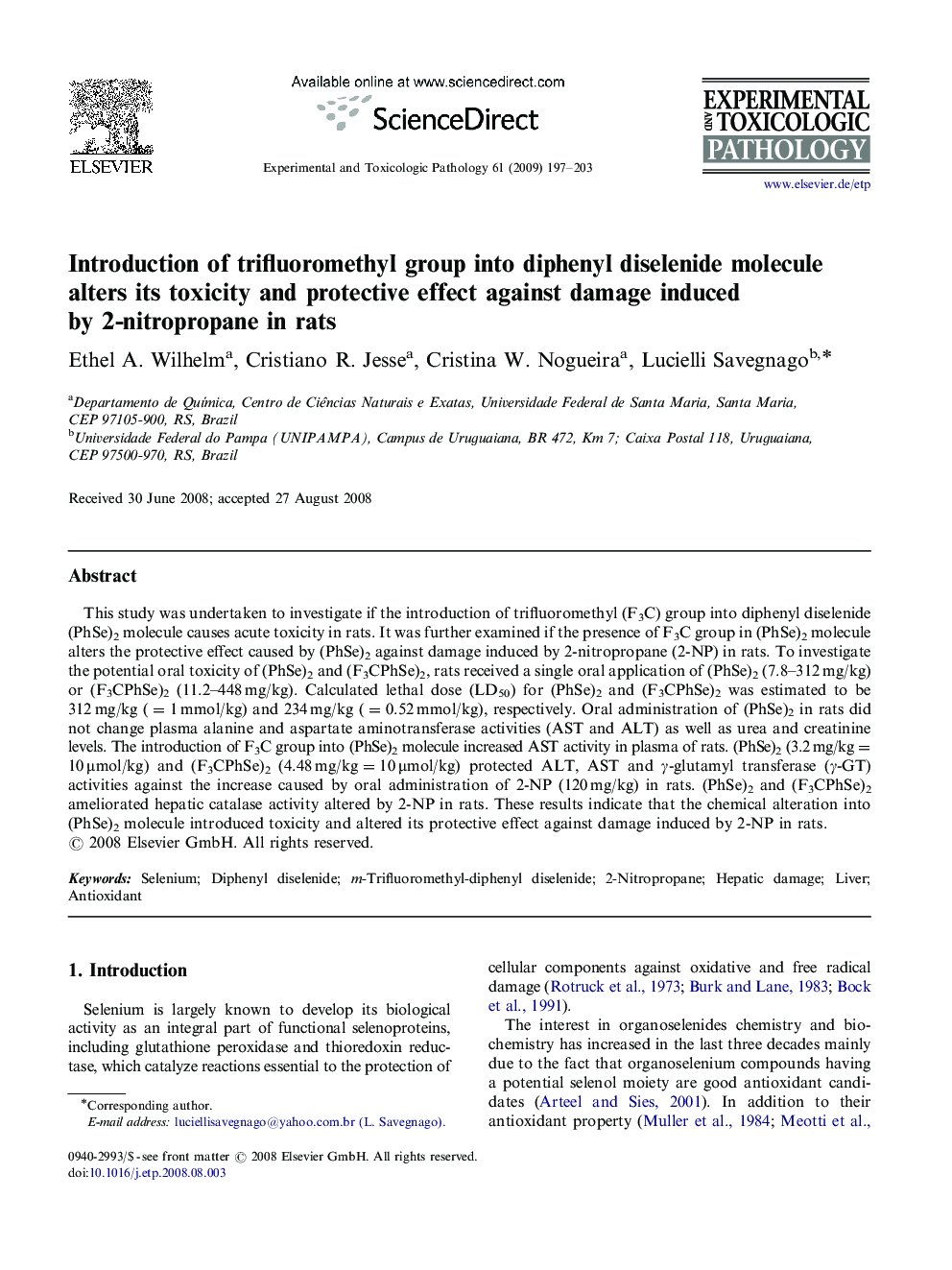| Article ID | Journal | Published Year | Pages | File Type |
|---|---|---|---|---|
| 2499742 | Experimental and Toxicologic Pathology | 2009 | 7 Pages |
This study was undertaken to investigate if the introduction of trifluoromethyl (F3C) group into diphenyl diselenide (PhSe)2 molecule causes acute toxicity in rats. It was further examined if the presence of F3C group in (PhSe)2 molecule alters the protective effect caused by (PhSe)2 against damage induced by 2-nitropropane (2-NP) in rats. To investigate the potential oral toxicity of (PhSe)2 and (F3CPhSe)2, rats received a single oral application of (PhSe)2 (7.8–312 mg/kg) or (F3CPhSe)2 (11.2–448 mg/kg). Calculated lethal dose (LD50) for (PhSe)2 and (F3CPhSe)2 was estimated to be 312 mg/kg (=1 mmol/kg) and 234 mg/kg (=0.52 mmol/kg), respectively. Oral administration of (PhSe)2 in rats did not change plasma alanine and aspartate aminotransferase activities (AST and ALT) as well as urea and creatinine levels. The introduction of F3C group into (PhSe)2 molecule increased AST activity in plasma of rats. (PhSe)2 (3.2 mg/kg=10 μmol/kg) and (F3CPhSe)2 (4.48 mg/kg=10 μmol/kg) protected ALT, AST and γ-glutamyl transferase (γ-GT) activities against the increase caused by oral administration of 2-NP (120 mg/kg) in rats. (PhSe)2 and (F3CPhSe)2 ameliorated hepatic catalase activity altered by 2-NP in rats. These results indicate that the chemical alteration into (PhSe)2 molecule introduced toxicity and altered its protective effect against damage induced by 2-NP in rats.
